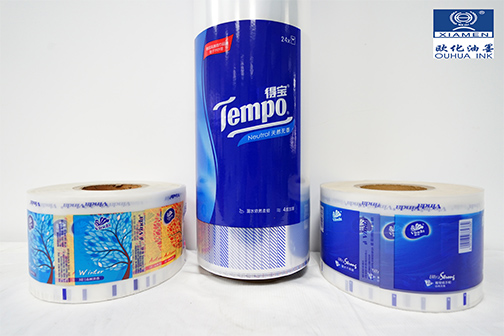
OHNS Type Two-component Table Printing Ink is a two component reaction type table printing ink. It has good adhesion to PE, PP, PET, NY and other films. The printed products have excellent resistance and are widely used table printing inks.
The performance characteristics:
1. This product has good leveling and good printing adaptability;
2. Two component ink;
3. The aged printed product has steaming (water) boiling performance and excellent acid and alkali resistance, heat resistance, oil resistance and low temperature freezing resistance.
The applicable substrates:
Handling BOPP and CPP, processing PE, processing PET film, processing nylon and PT film, etc.
The two-group distribution ratio and how to use:
Addition amount (% by weight) of the curing agent (BZ135) to the ink original ink
BZ135
White ink 8%
Color ink 8%
Varnish 8%
Note:
1. For specific tolerance, the hue is limited and varied by the amount of curing agent added.
2. When the curing agent is at a temperature lower than 20 ° C, the reaction speed is very slow, and the printed matter must be fully cured before it can exert its resistance;
3. When the residual ink of the added curing agent is used again, it is necessary to add a proportion of curing agent and new ink to mix and use.
4. Small pattern layout should pay attention to add curing agent, because the printing ink consumption is small for a long time, the ink absorbs a large amount of water causes the curing agent reacts too fast, so printing small pattern layout, ink need added an equal amount of curing agent in every 5 hours.
The curing conditions:
55 ° C / 24 hours
The diluents:
| Color ink | N-propyl acetate 60% | Ethyl acetate 30% | Isopropanol 10% |
| White ink | N-propyl acetate 40% | Ethyl acetate 50% | Isopropanol 10% |
The notes:
1. Please do not mix with other manufacturers' two-component inks to avoid waste caused by reaction;
2. Due to the different plastic substrates used in each factory, the adhesion of the ink layer will also be different, so the adhesion of the plastic substrate used should be evaluated before printing.
3. The amount of curing agent added is small, the ink reaction is insufficient, and the adhesion, solvent resistance, and oil resistance are low. As the amount of curing agent increases, the resistance of the ink will also increase, but the greater the amount of curing agent before the ink is cured, the greater the risk of sticking back of the ink. Therefore, the amount of curing agent should be increased according to the recommended amount in the manual or under the premise that the printed product does not stick to the back;
4. Add the curing agent before printing and stir well.
5. The product should be kept away from fire, sealed and stored for one year.